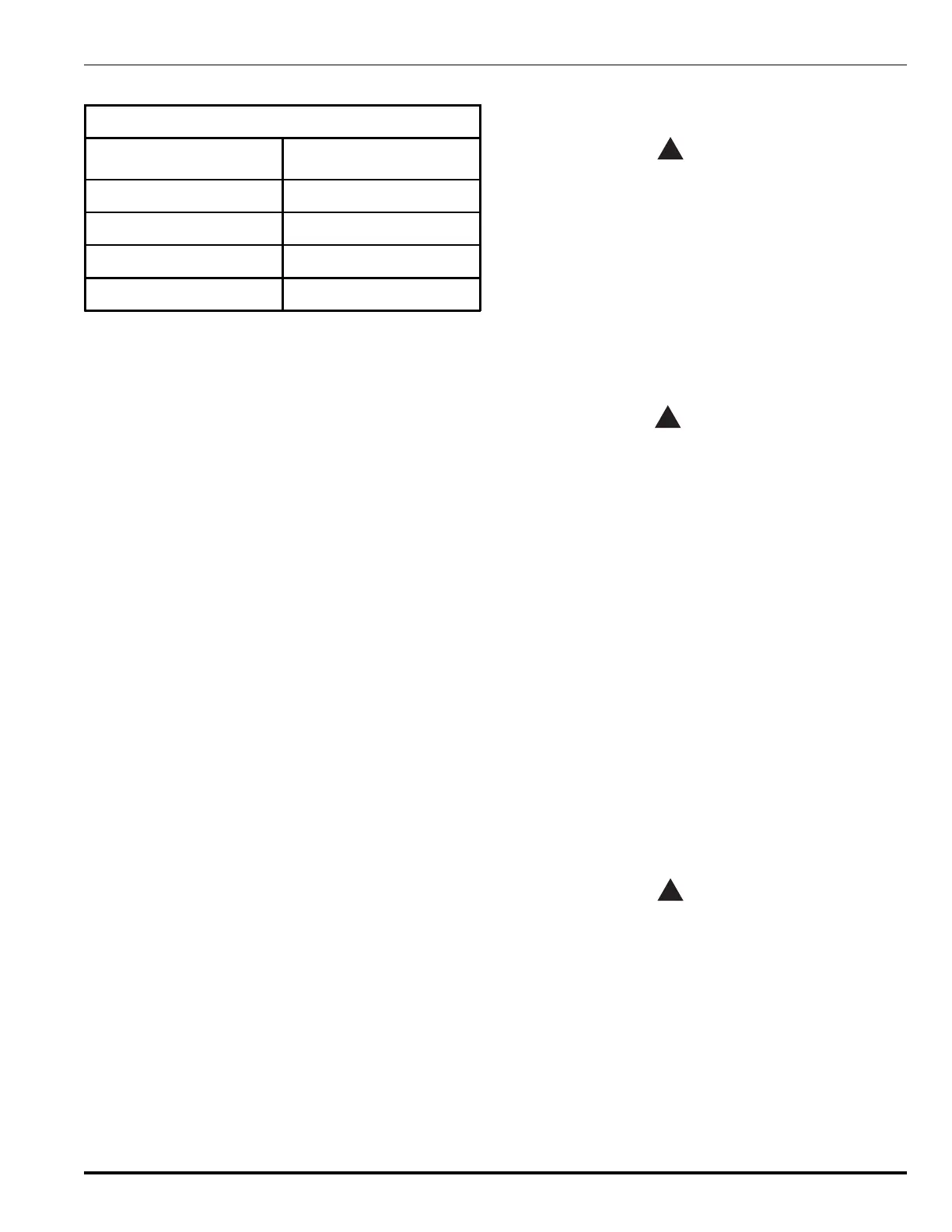6-7September 2004 90-FM200M-000
FM-200
®
ECS Series Engineered Fire Suppression Systems
Table 6-7. Pressure vs. Temperature
Pressure versus Temperature
Temperature
o
F (
o
C)
Pressure
PSIG (bar gauge)
60 (15.6) 340 (23.5)
70 (21.1) 360 (24.8)
80 (26.7) 381 (26.3)
90 (32.2) 402 (27.7)
360 PSIG + 25, - 0 PSIG, at 70°F (25 bar gauge +1.7, -0
bar gauge at 21°C) is the final pressure required after the
charged container has had sufficient time to stabilize. Ni-
trogen topping may be required to attain the 360 PSIG (25
bar gauge) after the stabilization period has elapsed.
Nitrogen charge weight for Kidde FM-200 ECS Series En-
gineered Fire Suppression cylinders at 70 lb./ft.
3
(1121 kg/m
3
) fill density is based on 1.88 lb. (0.85 kg) of
nitrogen per 100 lb. (45.3 kg) of FM-200.
11. If nitrogen is required, open the handwheel valve on
the nitrogen supply valve (Item 16) and nitrogen valve
(Item 7). Adjust the regulator (Item 17) until the master
gauge shows a pressure indication of 360 PSIG + 25, -
0 PSIG (25 bar gauge + 1.7, -0 bar gauge).
12. Open the hose control valve (Item 29) and let the
nitrogen flow into the cylinder until the master gauge
indicates 360 PSIG (25 bar gauge). Cylinder agita-
tion will assist with the equilibrium of nitrogen and
FM-200. Additional nitrogen may be necessary as the
cylinder equilibrates.
13. Close the hose control valve (Item 29). Remove the pilot
actuation port protection cap and assemble the seating
adapter (Item 2) with the flexible hose to the cylinder valve
actuation port. Open valve (Item 6), then adjust the regu-
lator to momentarily apply 450 to 600 PSIG (31 to 41 bar
gauge) nitrogen pressure to the actuation port to firmly
seat the cylinder valve piston .
14. While momentarily maintaining pressure on the actua-
tion port, open vent valve (Item 4) on the recharge
adapter (Item 1) to rapidly vent FM-200 from the valve
assembly outlet port. The sudden pressure decrease
at the valve outlet will ensure the valve seat stays in
the closed position.
15. Leave vent valve (Item 4) open. Close valve (Item 6)
and open valve (Item 5) to vent nitrogen from the seat-
ing adapter.
CAUTION
!
Any hissing or discharge coming from vent
valve (Item 4) indicates that the piston is not
seated properly or has opened. If this occurs,
repeat Step 16. Verify that the cylinder valve
piston remains closed.
16. Keep vent valve (Item 4) open. Close valve (Item 5),
and once again open valve (Item 6) to reapply nitrogen
pressure to the actuation port. While momentarily main-
taining pressure on the actuation port, remove the re-
charge adapter (Item 1) from the cylinder valve outlet
port and immediately install the safety cap. Close the
vent valve (Item 4).
WARNING
!
Nitrogen pressure must be maintained on the
actuation port while removing the charging
adapter and installing the safety cap to ensure
that the cylinder valve does not inadvertently
actuate while the valve outlet port is wide open.
Failure to follow this could result in injury and
damage to property.
17. Close the nitrogen supply valve (Item 16) and
open vent valve (Item 5) to vent nitrogen from the
supply line.
18. Remove the seating adapter (Item 2) from the cylinder
valve and reinstall the actuation port protection cap.
Close valves (Items 5 and 6).
19. Weigh the fully charged cylinder. The weight must
agree with the weight stamped on the cylinder valve
nameplate. Record the date of recharge on the cyl-
inder record tag.
20. Monitor the cylinder valve gauge. The gauge indicator
must read 360 PSIG + 25 -0PSIG at 70°F (25 bar +1.7,
-0 bar gauge at 21°C) after the stabilization period.
21. The cylinder is now ready for the leak test (refer to Para-
graph 6-3.3).
CAUTION
!
The Kidde FM-200 series agent containers have
been designed for a maximum fill density of
70 lb./cu. ft. (1121 kg/m
3
) and super pressurized
with nitrogen to 360 PSIG + 25 PSIG at 70°F
(25 bar gauge +1.7, -0 bar gauge at 21°C). It is
important that these values not be exceeded.
